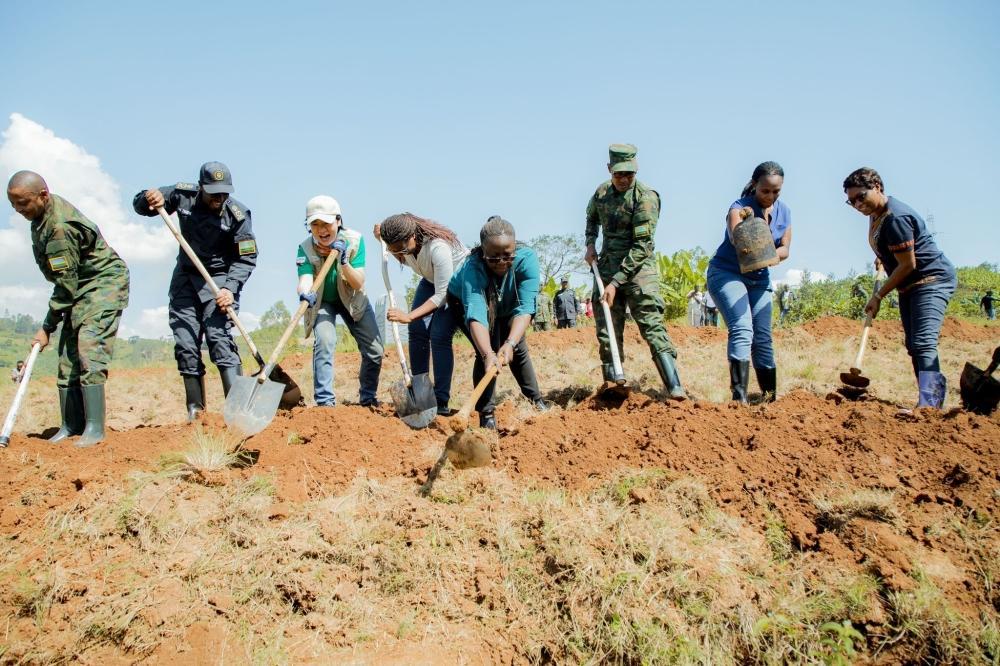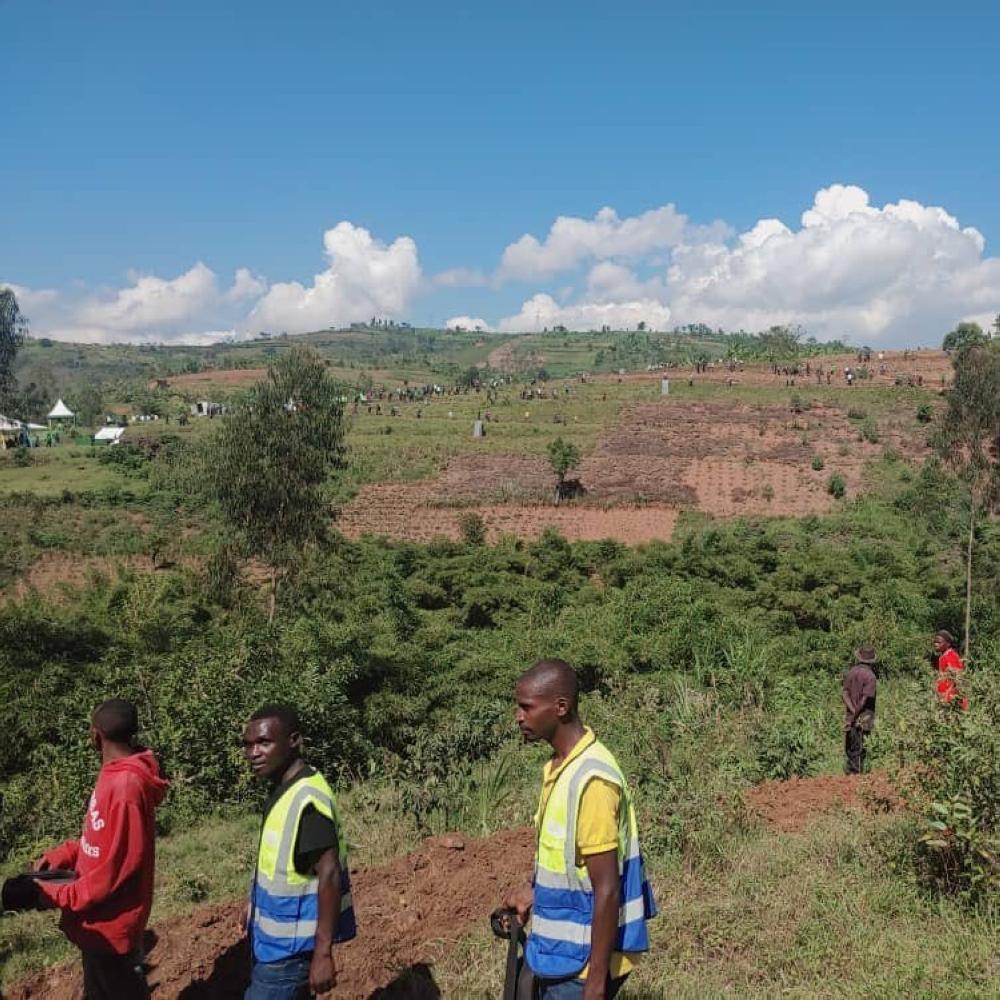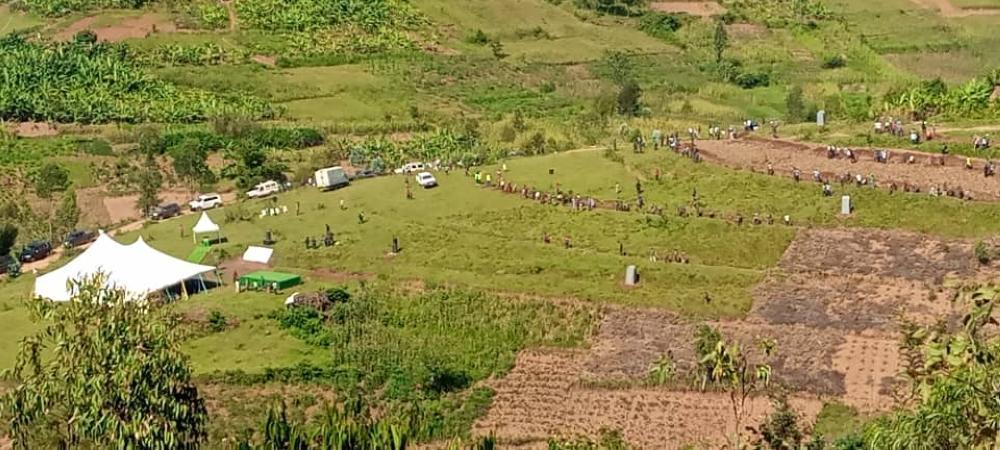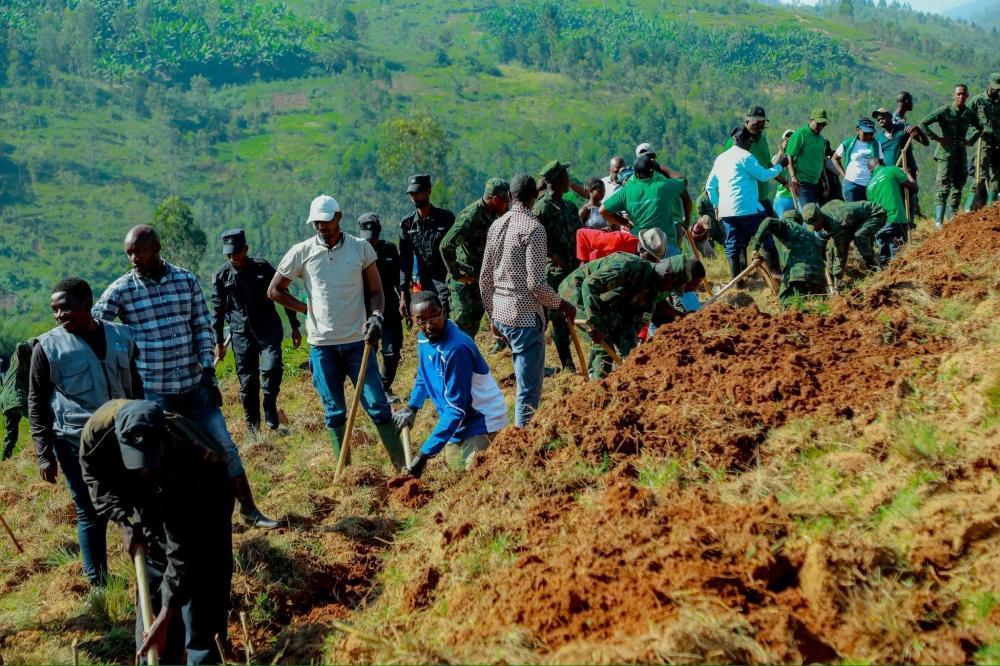Africa-Press – Rwanda. Greening the intersection of Nyamagabe, Ruhango, and Karongi districts will help curb pollution in Rwanda’s rivers that flow into the River Nile, according to Minister for Environment, Jeanne d’Arc Mujawamariya.
The commitment was made on Saturday, May 25, during Umuganda community work at Nyabikono, where the Mwogo and Mbirurume rivers meet to form the Nyabarongo River.
The Nyabarongo, the country’s longest river, is a key part of the upper headwaters of the Nile, eventually flowing into the Akagera River and Lake Victoria.
Residents of the three districts collaborated to create terraces on over 10 hectares around the Mwogo, Mbirurume, and Nyabarongo rivers. This effort promotes land management, sustainable agriculture, and environmental conservation.
Mujawamariya highlighted that land degradation, caused by erosion, deforestation, and unsustainable mining, is a significant contributor to river pollution. She stressed the need for collective efforts to restore degraded land and ecosystems, particularly at the Nyabikono site, which is part of National Environment Week activities that were launched on May 25.
Rwanda will join the world in marking World Environment Day on June 5, under the theme: Land Restoration, Desertification, and Drought Resilience. The environment week launch at Nyamagabe, Ruhango, and Karongi districts underscores the importance of protecting the Nile’s sources from pollution by restoring degraded land.
Mujawamariya stressed that the project is aimed at combating deforestation and erosion while enhancing climate resilience in the Western, Northern, and Southern provinces, which will also protect rivers flowing into the Nyabarongo River from pollution.
This project, titled “Building Resilience of Vulnerable Communities to Climate Variability in Rwanda’s Congo-Nile Divide through Forest and Landscape Restoration,” will cover 250,000 hectares with forest restoration and expand agroforestry over 2,000 hectares.
Scheduled from 2024 to 2028, it targets 10 districts, including Karongi, Ngororero, Nyabihu, Nyamasheke, Rubavu, Rusizi, Rutsiro, Nyamagabe, Nyaruguru, and Musanze.
Additionally, a $300 million initiative to curb flooding and erosion through land restoration in the Northern and Western provinces will protect the Mukungwa River, a tributary of the Nyabarongo River. Another $18 million project aims to restore degraded land and forests in all Southern Province districts and Gakenke District in the Northern Province from 2024 to 2028.
Over the past 30 years, Rwanda has achieved significant progress in land restoration, increasing forest cover to 30.4% of the national land. Since 2010, 708,628 hectares of degraded land, forests, and wetlands have been restored through 44 projects.
Rwanda has committed to restoring two million hectares, equivalent to 76% of the national land, under the Bonn Challenge.
Residents like Edouard Harindintwari from Musange Sector, Nyamagabe District, and Ancile Dufashwanayo from Karongi District, expressed the impact of soil erosion and deforestation on their livelihoods and welcomed the reforestation and land restoration initiatives.
The Rwanda Environment Management Authority (REMA) is planning a 5-day “Environment Restoration at 30” tour to showcase Rwanda’s successes in reversing land degradation and promoting sustainable practices. The tour aims to educate and engage young Rwandans in preserving and restoring the country’s natural heritage.
For More News And Analysis About Rwanda Follow Africa-Press









